
From an oral tradition to the Tarot as history…

Before 1450, the history of the tarot is riddled with unknowns, and thus leaves room for legend, the voices of those whose words were never put to paper…
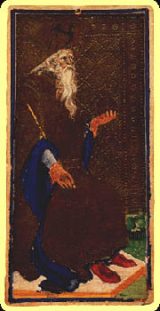
Visconti-Sforza
(Pierpont-Morgan)
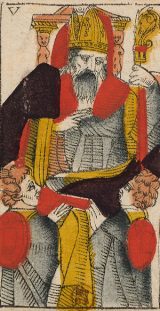
Jacques Viéville
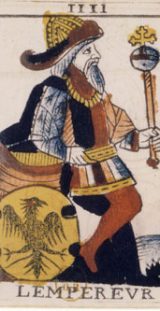
Jean Noblet
A History of the Game of Tarot
A game of cards known as “naïbbi” appeared in Florence, Italy around 1375 and by the end of the 14th century had diffused throughout Western Europe. Were the naïbbi an ancestor of the tarot, or were the trumps and face cards added later?
We have no idea.
The 1377 archives of the town of Viterbe, between Rome and Florence, furnish the first edict seeking to regulate or even forbid games of chance and money. These records cite the naïbbi as having been brought to Italy by the “sarrasin” Hayl. This marks the beginning of a long list of interdictions.
The first nearly complete tarot (74 of 78 cards) to come down to us is the early 15th century (c.1420-1425) Visconti-Sforza princely Tarot. It is known as the “Pierpont Morgan Bergame”, and was probably painted by Bonifacio Bembo. Of these princely tarots, there remain 239 cards from 11 different decks. They are large, hand-painted on thick cardboard and could not have been used as a game.
To the basic game are added 21 + 1 cards which the Italians called TRIOMPHES and the French ATOUTS or “trumps”. Numbered from 1 to 21, with an unnumbered 22nd called the Excuse, Fool or Mat, these trumps dominate all the others and guarantee victory.
The Tarot’s success among the popular classes was stunning. Played for money, the game spread like wildfire.
It also seduced the ruling classes: numerous Princely Tarots, illuminated by the finest artists of the day, have come down to us: Visconti-Sforza Tarot (Milan, c. 1425), “Charles VI” Tarot (Northern Italy, late 15th century), etc. These tarots were probably used only for divination.
We also possess a few 16th (tarot of Catelin Geofroy) and 17th (tarots of Jacques Viéville, Jean Noblet and “anonyme parisien”) century popular versions, stencil-coloured woodblock prints.
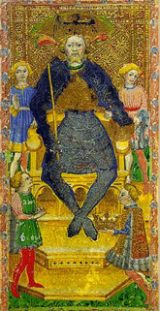
Visconti-Sforza
(Cary-Yale)
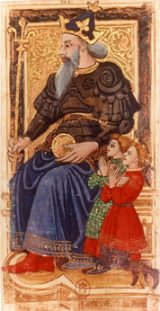
Charles VI
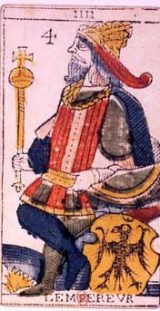
Jean Dodal

Playing cards, and tarots, were sold in printed wrappers. This one is from Brussels, and says “I wish peace to you all.”

